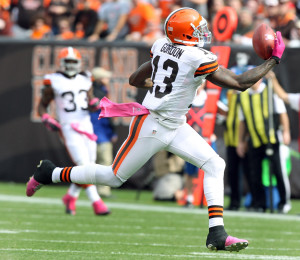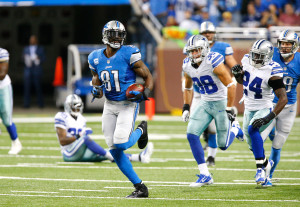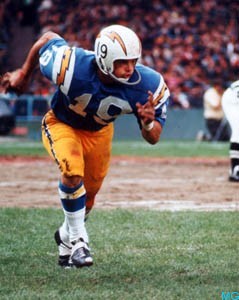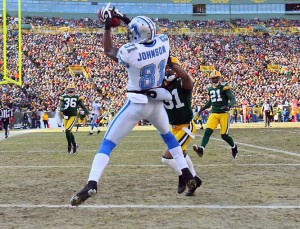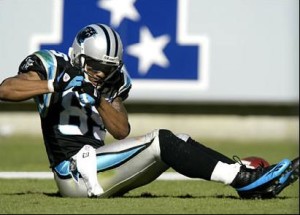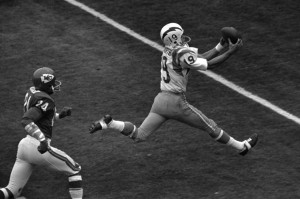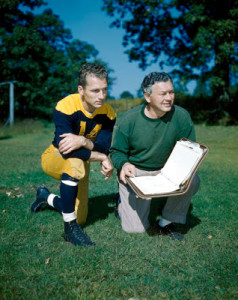Analyzing wide receivers is complicated, so much so that I’ve devoted a tag here at FP to the project. In my opinion, there’s no one statistic we can use to grade receivers, so a holistic approach is best.
A great wide receiver should have a large percentage of his team’s passing pie. And a great wide receiver should make that passing offense effective. So from time to time, I look to compare how receivers look in these two metrics, and see who is standing out. The theory is simple: if you are a great wide receiver, you should have an outsized portion of that team’s passing offense, unless the supporting cast is so strong that well, the entire passing offense looks great. A wide receiver on a bad passing offense should have a huge percentage of his team’s production, so he’ll still look good here; a wide receiver on a great offense should fare well unless he’s only got a small piece of the pie, in which case he’s probably not having a great season. Regular readers will recall that this analysis is why I think Gary Clark‘s 1991 season is one of the best of all time.
So here’s what I did.
1) Calculate the Adjusted Net Yards per Attempt for each offense so far in 2019.
2) Calculate Adjusted Catch Yards, defined today as Receiving Yards + 20 * Receiving Touchdowns, for each player on each offense.
3) Divide each player’s Adjusted Catch Yards by his team’s total Adjusted Catch Yards; this shows what percentage of the pie each receiver is gobbling up.
There are 12 players who have at least 30% of their team’s Adjusted Receiving Yards this year. Michael Thomas, Mike Evans, Courtland Sutton, Cooper Kupp, Allen Robinson, Chris Godwin, John Brown, Stefon Diggs, Terry McLaurin, D.J. Chark, Amari Cooper, and Tyler Lockett. Of that group, only three — Lockett, Cooper, and Diggs — are playing on really good passing offenses, and Thomas, Kupp, and Chark are the only other ones on passing offenses that are above average. It’s safe to say that all six of these players are having really good years (at least when it comes to picking up receiving yards; Diggs has four fumbles, including three lost, that knock him down a few pegs). And while McLaurin and Robinson are playing on awful passing offenses, at least they are dominating the pie: they are saddled with bad quarterbacks, and there probably isn’t much either of them can do.
I’ve plotted every player with a reception so far in 2019 in the graph below. The X-Axis shows the Relative ANY/A for that player’s passing offense — this is simply a measure of team pass efficiency, and is calculated as ANY/A minus league average ANY/A. Players on the Jets are on the far left; players on the Seahawks and Chiefs are on the far right.
The Y-Axis shows the percentage of team’s Adjusted Receiving Yards by each player. So Michael Thomas (38.8%) is at the top of the chart, Mike Evans is second (at -0.42, 36.0%) is the second highest point, etc. In general, you want to be up and to the right on this chart. The four players who stand out here are Thomas (+0.80, 38.8%), Amari Cooper (+1.57, 30.6%), Stefon Diggs (+2.16, 31.1%) and Tyler Lockett (+2.43, 30.3%). [continue reading…]







